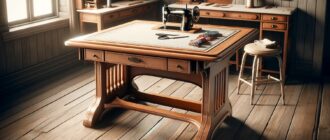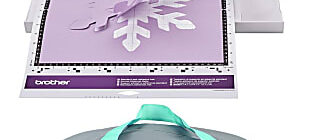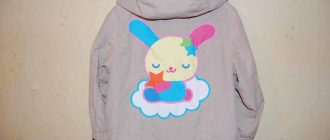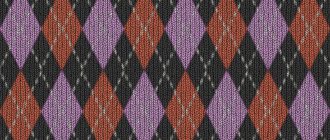The cutting tables for sewing make it easy to cut fabric and other materials for your sewing projects.
Sewing can be a challenge when you do not have the right tools, equipment, and supplies.
When shopping for a cutting table, look at its overall size. You should be able to stand up straight while working on it.
You will also need enough room to work comfortably with your material.
Best Cutting Tables for Sewing
As Amazon Associates, we may earn from qualifying purchases.
What is a fabric cutting table?
A cutting table is an essential tool for anyone who sews.
The most common type is a surface with a built-in cutting mat, which makes it easy to line up the fabric and cut straight lines without worrying about stretching or distorting it.
Some sewing tables also have storage compartments underneath the tabletop for quilting supplies or other items you might need while working on your project.
Many different sewing cutting tables are available, including large floor models good for industrial purposes and smaller portable options better suited for home use.
If you don’t have space for a dedicated sewing area in your house, consider placing your cutting table near where you usually do your projects so that it’s always within reach when needed (and out of sight when not).
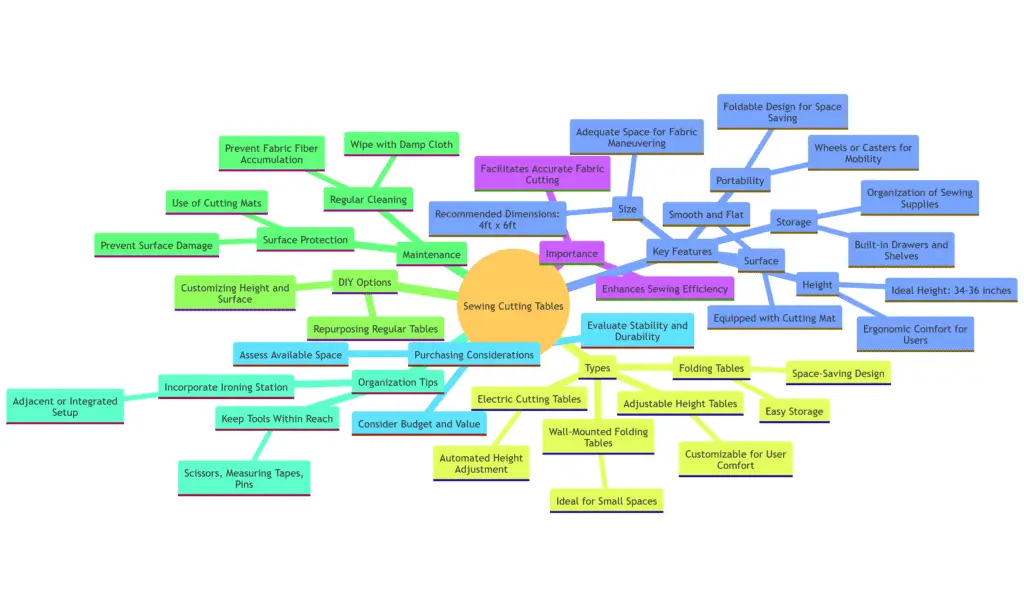
How big should a sewing cutting table be?
When choosing a cutting table, make sure that it’s four feet wide and six feet long.
This gives you plenty of room to maneuver fabric while cutting—you don’t want your table to be so small that your fabric constantly gets caught under the blade of your rotary cutter or ruler!
You also need enough space in front of the table to easily reach all corners and edges of your work surface when sewing.
The height should be at least 34 inches: any shorter, and you risk running into back pain issues; any taller, and it becomes difficult for some people (who are shorter) to reach their whole hand over the edge without having their elbows bend uncomfortably far back towards their hips.
A sewing-cutting table can be made from a regular table or a store-bought item.
The first thing you need to do is decide how tall the table should be.
This depends on your height and preferences. If you are short, you will not want a tall table as it will be uncomfortable for you to use.
You also have to consider where you will be sitting when working on the table and consider when choosing its height.
The second is that you need to make sure the fabric doesn’t slip when using a cutting mat on top of the surface of your sewing cutting table.
Since it won’t be made of wood, covering it with something like contact paper or whiteboard paper may prevent slipping while cutting fabric pieces or patterns.
Finally, if possible, choose a sturdy material such as plywood or MDF (medium-density fiberboard) instead of cheaper materials like particleboard.
These cheaper alternatives tend not to hold up well over time due to durability concerns!
How do you make a homemade cutting table?
The most important part of having a cutting table for sewing is choosing a sturdy table.
You want to find one that’s strong enough to hold all your stuff but lightweight and easy to move around.
You can make your homemade cutting table portable with casters or wheels or use it as a permanent fixture in your sewing room.
If you choose the latter, consider adding rolling legs at the bottom so that you don’t have to lift it onto another surface (or lift off all your supplies).
If you add casters or wheels, be sure they are heavy-duty enough for everyday use and won’t break easily when weight is applied.
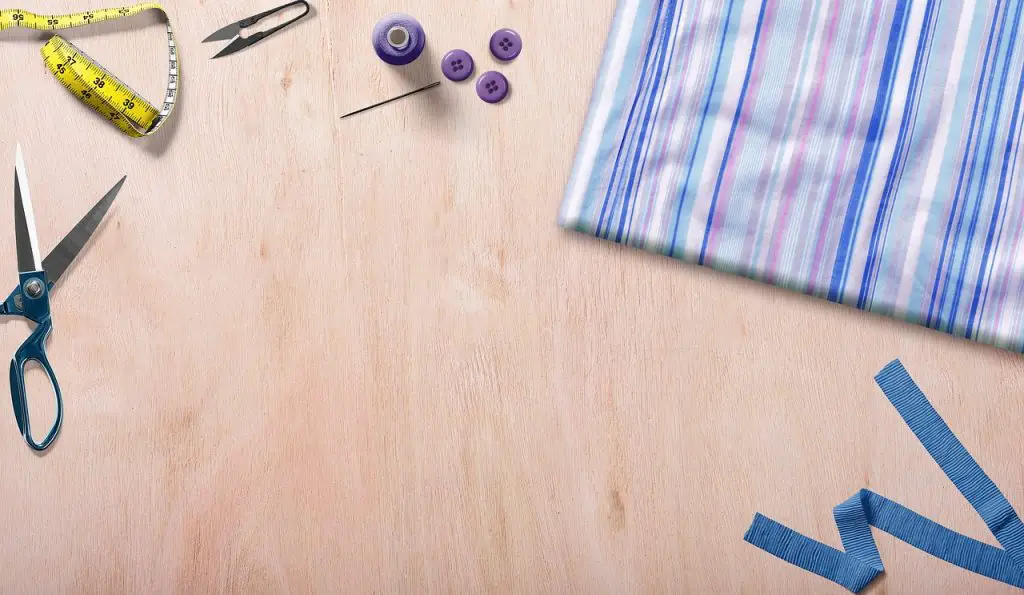
Cutting tables for sewing are usually between 34 and 36 inches high for the comfort of sitting and standing.
Cutting tables are usually between 34 and 36 inches high for the comfort of sitting and standing.
The best height for you will depend on your height and how you like to work.
A good rule of thumb is to choose a table height that allows you to sit comfortably with your knees bent at a 90-degree angle or stand with your feet flat on the floor.
Choosing an appropriate cutting table height is essential because it affects how you use the table.
Make sure that everything on it is visible when seated or standing.
If this isn’t possible, consider mounting an adjustable height stool at one end of the table so that you can adjust its height as needed.
If you have the room, you can iron on your cutting table or use an ironing board to the side.
Once you’ve chosen a spot for your cutting table, it’s time to set up an ironing board.
This can be done in two ways:
- You can iron directly on your cutting table or
- If you have room, place the ironing board near your cutting table.
Fabric, measuring tools, scissors, and pins should all be within arm’s reach of your cutting table.
The cutting table should be comfortable for you to work at.
You will want to have a magnetic seam guide on your cutting table so you don’t have to hold your fabric up while you cut it.
Make sure the cutting table is big enough for the fabric you are working with, and also make sure it has enough space around it so there aren’t any obstacles in your way when working on different projects.
You should keep measuring tools and scissors nearby as well!
A cutting table should have additional storage to keep your supplies organized and easily accessible.
The cutting table is the best place to store a small ironing board.
With a smaller ironing board, it’s easier to maneuver around the sewing machine while you work.
A good cutting table will have additional storage in its drawers or compartments for organizing supplies and keeping them from getting lost.
Additionally, if you have enough room in your workspace, set aside an area for displaying finished projects so that they are easy to find when you need them.

Above the cutting table is a great place to store your fabric bolts.
Above the cutting table is a great place to store your fabric bolts.
The distance between the top of the cutting table and the bottom of the shelf should be at least 24 inches to spread out your fabric on top of it.
If you have limited space, consider using a wire shelf instead of a solid shelf to see through it.
Depending on their length, you’ll need enough storage for about 15 bolts of fabric.
Once you’ve decided where to store them, measure how many bolts will fit in this area above your cutting table and make sure there’s room for them by measuring from each side and then adding those measurements together (e.g., if your shelves are 12″ deep from one side and 20″ deep from another side, that’s 32″).
Creating an efficient sewing space can help make you more productive and satisfied with your projects.
The first thing you need is a good cutting table.
The best one for you depends on your height, but it should be about waist high and shouldn’t be too low (you can always get a footstool).
Having an ironing board nearby is also helpful for smoothing out fabric, and if you’re using hand-sewing needles, having some point protectors in case they get knocked off the table by accident will save you from stabbing yourself with them later.
You’ll be able to keep all of your tools close at hand this way—even scissors stuck into the side of the table are better than those underfoot while walking around!
Conclusion
We were hoping this article would help give some ideas to those interested in taking up sewing.
We hope that the information provided here will be helpful for anyone looking to build their sewing cutting tables.
Having a formal cutting table setup ensures precision and efficiency in the cutting phase of your sewing projects, whether this is clothing or home decor.
